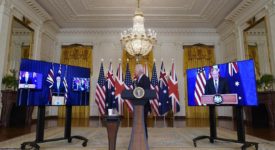The European Central Bank (ECB) announced it was ready to launch unconventional tools if needed to avoid the danger of deflation and boost growth in the common currency area. Mario Draghi spoke at the economic and monetary affairs committee of the European Parliament’ envisaging that there should be more demand from banks for ECB’s new long term loan program, known as TLTROs. The ECB’s decision to opt for less conventional measures was expected as the first batch of loans, issued last week, was less successful than expected. Among unconventional measures should likely be for example printing money to purchase securities. This kind of quantitative easing, which has been pursued by the United States’ Federal Reserve (FED), is however not embraced by Germany.
According to the governor’s words, the ECB “remains fully determined to counter risks to the medium-term outlook for inflation”. He added that using unconventional instruments is a proof of the bank’s commitment to fight deflation. Mr Draghi further said that almost 83 billion euros that have been taken by 255 European banks were “within the range of take-up values we had expected”. He pointed out that banks would have another possibility to participate in the program in December this year adding that “by design, the September and December operations should be assessed in combination”. Mr Draghi thinks that the latest developments in the TLTRO initiative had already had a “positive impact on financial market sentiment”.
Analysts hypothesize that December tranche will be on demand more than last week’s sale but it could leave about 30 percent of the total 400 billion euros untapped. The ECB is not the first central bank to use measures involving purchases of large amounts of private or sovereign debt. Its counterparts – the US Federal Reserve or the Bank of Japan – had used them in the past to provide their economies with a stimulus.







